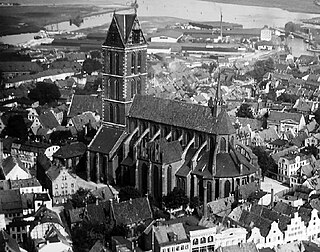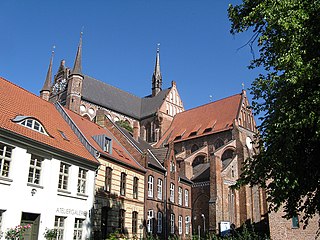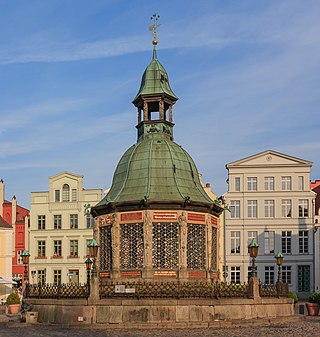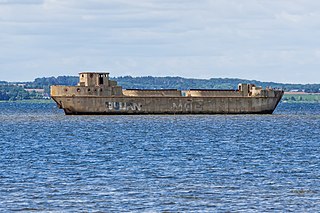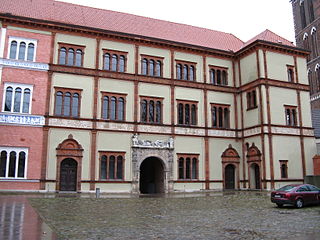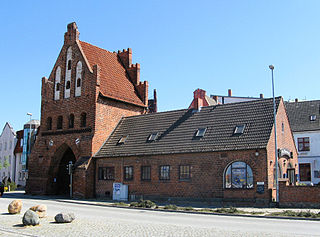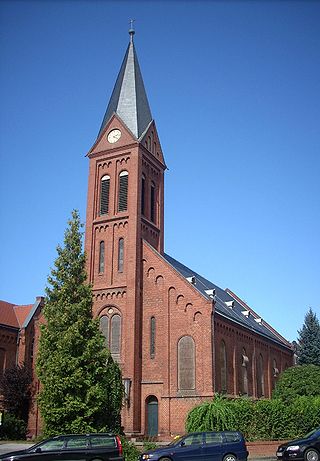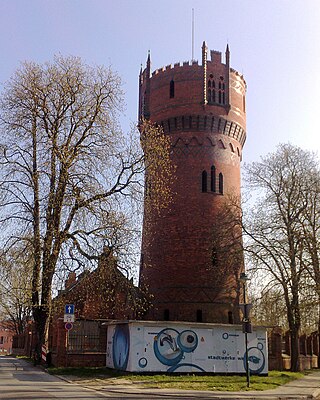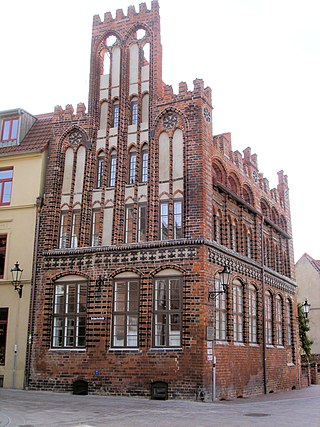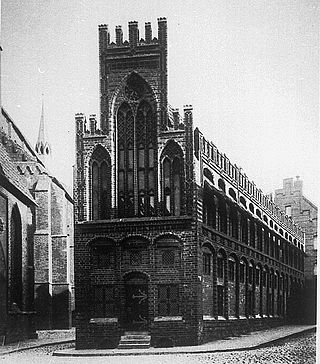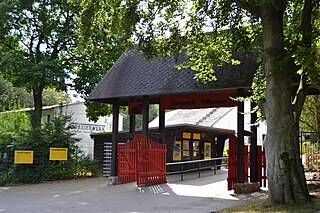12 Sights in Wismar, Germany (with Map and Images)
Legend
Welcome to your journey through the most beautiful sights in Wismar, Germany! Whether you want to discover the city's historical treasures or experience its modern highlights, you'll find everything your heart desires here. Be inspired by our selection and plan your unforgettable adventure in Wismar. Dive into the diversity of this fascinating city and discover everything it has to offer.
Sightseeing Tours in Wismar1. Ruine der Marienkirche
St. Mary's Church is located in the center of Wismar's old town, St. Mary's Churchyard, between the market square and the Fürstenhof. It was the main parish church and council church of the market town. It is one of the oldest buildings in the Hanseatic city. Their ship, which was badly damaged in the Second World War, was blown up in 1960. Only the 80.5-metre-high tower remains.
2. St.-Georgen-Kirche
The church of St. Georgen is one of the three monumental Gothic sacred buildings in Wismar's old town, along with St. Mary's and St. Nikolai. Based on the building mass and the enclosed space, the Georgenkirche, which was begun around 1295, is the largest of these buildings. At the same time, it is also the youngest church building and is considered the miracle of Wismar.
3. Wasserkunst
The Wismar Waterworks is located on the one-hectare market square in Wismar and is considered the city's landmark. It is a building designed by the Utrecht master builder Philipp Brandin and functioned according to the principle of the running fountain. The implementation of these plans lasted from about 1579 to 1602. The dodecagonal building in delicate stone work was built in the style of the Dutch Renaissance. On the limestone corners, there is a copper dome with a hexagonal lantern.
4. Betonschiff Redentin
The concrete ship of Redentin is a 300 t concrete ship of the type "Seeleichter Wiking Motor". It was one of a series of more than 50 cargo motor ships built during the Second World War for the "Transportflotte Speer" at various construction sites.
5. Neue Kirche
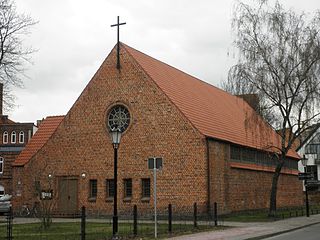
The New Church is a listed church building on the St. Mary's Cemetery in Wismar in the district of Nordwestmecklenburg (Mecklenburg-Vorpommern). The nave of the nearby St. Mary's Church was unusable due to war damage, and so an emergency church had to be built for the parishioners of St. Mary's Church and St. George's Church, which was also badly damaged, which was originally intended as a temporary solution. This transitional solution still exists today; the church serves the Evangelical Lutheran parish of Wismar St. Marien/St. Georgen in the Provost of Wismar, church district of Mecklenburg of the Evangelical Lutheran Church in Northern Germany.
6. Fürstenhof
The Fürstenhof in Wismar is an important building of the Mecklenburg State Princely Residence Architecture. It not only represents the first important Renaissance structure of Mecklenburg, but also forms the style-forming prototype of the Johann-Albrecht style, which is of great regional importance for this era.
7. Wassertor
The Wassertor in Wismar on the Wasserstraße in the northwest of the city's historic city center is a harbor gate of the Hanseatic city in the style of brick Gothic and the last of the former five city gates of Wismar's city fortifications. The leading road is called Spiegelberg. It was also the only beach or harbour gate through which you could get directly from the harbour to the city. The others, all country gates, were the Poeler Tor or Haraldstor in the north, the Mecklenburg Gate in the south, the Lübsche Tor in the west and the Altwismartor or Rostocker Tor as a counterpart in the east, each at the end of the street of the same name. South of the water gate there was a "water gate" as a wall passage of the pit, a canal-like east-west running artificial water arm from the 13th century and in the southeast a wind gate.
8. Sankt Laurentius
The Catholic parish church of St. Laurentius is a church building in Wismar in the Nordwestmecklenburg district, in Mecklenburg-Vorpommern, Germany. It was given the name of St. Lawrence because the Roman martyr was considered the patron saint of Wismar until the Reformation.
9. Wasserturm
The water tower in the Hanseatic city of Wismar in Mecklenburg-Western Pomerania is a neo-Gothic brick tower built in 1897. It was part of the former waterworks at Turnplatz. The waterworks is on the list of monuments of the Hanseatic City of Wismar.
10. Archidiakonat
The former archdeaconry is a listed building at St.-Marien-Kirchhof 3 in Wismar in the district of Nordwestmecklenburg. The former administrative and residential building of the archdeaconry was built in the style of North German brick Gothic.
11. Alte Schule
The Alte Schule was a building in Wismar, Mecklenburg-Vorpommern, Germany. It belonged to the "Gothic Quarter", which was concentrated around St. Mary's Church until its almost complete destruction in the Second World War. The architectural signature of the Hanseatic era was pronounced here like in hardly any other northern German city. The delicately designed facades were an important example of Gothic brick art in the early 14th century. The old school with a two-storey elevation stood west of the church of St. Mary, whose tower still stands today.
12. Tierpark Wismar
The Wismar zoo is a zoo on the outskirts of the Hanseatic city of Wismar, about two kilometers southwest of the historic center. The elongated, mostly forested area in the valley of the Köppernitz borders on the Bürgerpark, the site of the 2002 state garden show.
Share
How likely are you to recommend us?
Disclaimer Please be aware of your surroundings and do not enter private property. We are not liable for any damages that occur during the tours.
